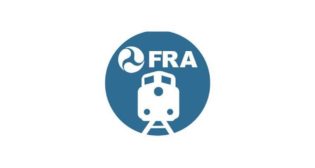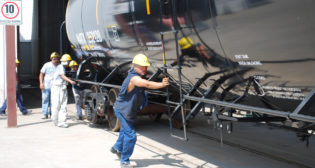
TTCI R&D: How healthy are your castings?
Written by William C. Vantuono, Editor-in-ChiefIn-service failures of large freight car castings have resulted in a comprehensive review of the specifications governing their manufacture, inspection, and repair.
As part of an overall industry effort, Transportation Technology Center, Inc. (TTCI) initiated a research project to improve the quality and reliability of large freight car castings, specifically sideframes and bolsters. An analysis of the number of reported failures was conducted as part of this research. Results from this analysis showed that between 2000 and 2008, approximately 15,000 bolster and sideframe failures were reported in the AAR Car Repair Billing database. The failure data collected during the analysis and surveys produced by participating railroads indicate that an investigation into the metallurgy, component design, and development of nondestructive testing procedures is needed to reduce the number of in-service failures of these components.
Project focus areas
TTCI has developed a research approach under the Association of American Railroads’ Strategic Research Initiative (SRI) Program that focuses on three areas of study to identify defective castings before in-service failures occur: (1) defining the stress environment and current performance of truck castings, (2) developing nondestructive inspection (NDI) methods, and (3) determining the quality of Grade B+ material. The stress environment and NDI methods were selected as the first areas of study based on feedback from railroad members. The following list details the approach used by TTCI to define the stress environment and performance of truck castings in this environment:
• Identify critical stress areas in bolsters and side frames using finite element (FE) analysis.
• Estimate the bolster and side frame stress environment using available revenue service load environment data.
• Estimate the fatigue life of castings with and without surface defects.
Once the critical stress areas of the castings were identified, a parallel effort began to review NDI technologies capable of inspecting large truck castings for defects that could potentially lead to failure.
The final area of research, focusing on the quality of Grade B+ material, is ongoing at TTCI. A thorough survey of Grade B+ material is being completed under a joint effort between the Federal Railroad Administration and the SRI program.
Stress environment
The first step in the development of the FE and fatigue models was to generate solid models that were representative of the S-2-HD bolster and sideframe castings. To understand the variance in stress based on component design, three manufacturers were chosen for the analysis.
Solid models for each manufacturer were engineered using laser-scanning technology. Once the solid models were constructed, they were imported into an FE analysis software package and meshed with over one million elements each. An analysis was completed with the castings in the “As-manufactured” condition for three different load conditions. The results of the analysis defined the critical stress areas in each casting. After critical stress areas and nominal stress levels were identified under various load conditions, simulated defects were placed into the models, and the changes in stress levels in the critical areas were observed. Fatigue analyses were completed for a total of six S-2-HD bolster and sideframe castings with and without defects using stress data from the FE analysis, strain data collected from revenue service, and mechanical test data for Grade B+ material gathered from a literature review.
All of the reported fatigue life estimates assume component life until crack initiation. Crack growth analysis was not included in this study. Results from the FE analysis show that the highest stresses were found in the brake rod hole and transition area for the bolster and the pedestal jaw radius and spring nest radius for the side frame (Figure 1). The FE results also indicate that when defects are present in the critical stress areas, high localized stresses are observed that are above the yield strength of the material. Figure 2 is an example of an FE model result for a bolster, highlighting the critical stress areas and the stress concentrations around a gouge type defect.
The results of the stress/fatigue analysis indicate that when defects are present in critical stress areas, a reduction in component stress is necessary to improve the overall fatigue performance of the S-2-HD bolster and sideframe castings. Figure 3 shows the fatigue life estimates for all manufacturers’ bolsters and side frames when defects are present. The estimates show that only a few cases meet or exceed the target life of 1.5 million loaded miles (red dotted line) when defects are present in critical stress areas. The data also indicates that some designs may be more susceptible to fatigue damage than others.
Nondestructive inspection procedures
In addition to the FE/fatigue analysis, TTCI investigated various NDI methods to determine if they are capable of reliably inspecting sideframes and bolsters. The NDI methods evaluated included dry and wet (fluorescent) magnetic particle (MP), liquid penetrant, alcohol wipe, visual, ultrasonic (pulse-echo and phased array), and radiography. Field evaluations showed that using a MP inspection technique was the best candidate for field application. TTCI used the results of the field evaluations to provide a draft recommendation to the AAR’s Coupling Systems and Truck Castings Committee for review and implementation.
The final research area is focused on the quality of Grade B+ material. FRA recently has joined efforts with the AAR’s SRI program to conduct a thorough survey of cast material from a wide range of manufacturers and foundries. Under the FRA program, mechanical test data (tensile, Charpy, and dynamic tear) will be collected from seven different foundries. All samples will be removed from the critical stress areas of the castings. Results from the testing will enable TTCI engineers to determine the current state of material quality and develop a set of recommendations for improvements in Grade B+ metallurgy.



